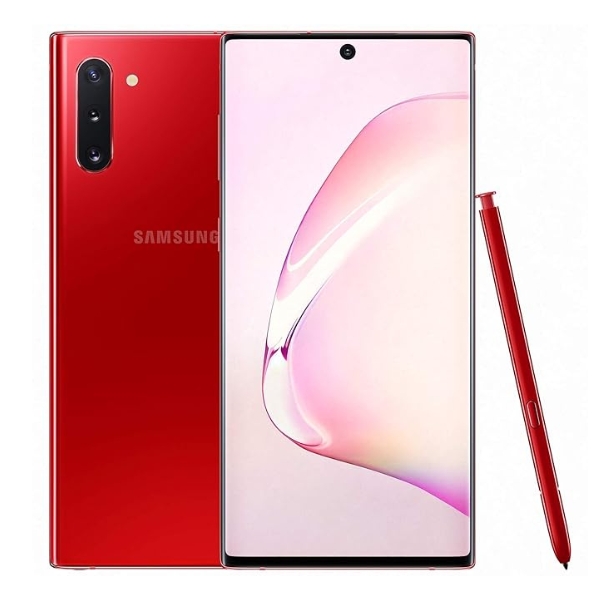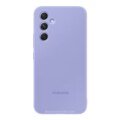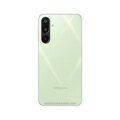Samsung Galaxy Note 10








-
Display: 6.3 inches
-
Back Camera: 12MP+12MP+16MP
-
Front Camera: 10MP
-
RAM: 8 GB
-
ROM: 256 GB
-
Chipset: Qualcomm SDM855 Snapdragon 855 (7 nm) - USA/China
-
Opearating System: Android 9.0 (Pie); One UI
-
Battery: 3500 mAh
Full Specifications
Price in Bangladesh
| Unofficial Price | ৳66,000 (8/128GB) / ৳67,000 ( 8GB 256GB) |
| Global Price | 590 EUR (8/256GB) |
LAUNCH
| Announced | 2019, August |
| First Released | Available. Released 2019, August 23 |
| BD Release | 2019, August 23 |
Memory
| RAM |
8 GB |
| ROM | 256 GB |
| SD Card Slot | No |
Back Camera
| Setup | Triple |
| Camera |
12 MP, f/1.5-2.4, 27mm (wide), 1/2.55", 1.4µm, Dual Pixel PDAF, OIS 12 MP, f/2.1, 52mm (telephoto), 1/3.6", 1.0µm, PDAF, OIS, 2x optical zoom 16 MP, f/2.2, 12mm (ultrawide), 1.0µm, Super Steady video |
| Resolution | 12+12+16 Megapixels |
| Features |
LED flash, auto-HDR, panorama |
| Video Recording |
22160p@30/60fps, 1080p@30/60/240fps, 720p@960fps, HDR10+, dual-video rec., stereo sound rec., gyro-EIS & OIS |
Front Camera
| Camera |
10 MP, f/2.2, 26mm (wide), 1.22µm, Dual Pixel PDAF |
| Resolution | 0 Megapixel |
| Features |
Dual video call, Auto-HDR |
| Video Recording |
2160p@30fps, 1080p@30fps |
PLATFORM
| Operating System OS => Every computer system run on a base software called Operating System (OS). Operating System controls all basic operations of the computer (such as smartphone, PDAs, tablet computers and other handheld devices). The Operating System allows the user to install and run third party applications (apps), apps are used to add new functionality to the device. | Android 9.0 (Pie); One UI |
| Chipset Chipset is a group of integrated circuits designed to perform one or a more dedicated functions, often with real time computing constraints, Popular smartphones are equipped with more advanced embedded chipsets that can do many different tasks depending on their programming. | Exynos 9825 (7 nm) - EMEA/LATAM / Qualcomm SDM855 Snapdragon 855 (7 nm) - USA/China |
| CPU | Octa-core (2x2.73 GHz Mongoose M4 & 2x2.4 GHz Cortex-A75 & 4x1.9 GHz Cortex-A55) - EMEA/LATAM / Octa-core (1x2.84 GHz Kryo 485 & 3x2.42 GHz Kryo 485 & 4x1.78 GHz Kryo 485) - USA/China |
| GPU GPU (Graphics Processing Unit) is a single-chip processor designed to rapidly manipulate and alter memory to accelerate the creation of images in a frame buffer intended for output to a display, This includes things such as lighting effects, object transformations, and 3D motion. | Mali-G76 MP12 - EMEA/LATAM / Adreno 640 - USA/China |
Body
| Dimensions |
151 x 71.8 x 7.9 mm (5.94 x 2.83 x 0.31 in) |
| Weight |
168 g (5.93 oz) |
| Build Material |
Front/back glass (Gorilla Glass), aluminum frame |
| Colors |
Aura Glow, Aura White, Aura Black, Aura Pink, Aura Red |
Display
| Display Type Display Technology => A number of display technologies and types used in mobile phones => TFT (Thin Film Transistor), IPS (In-Place Switching), OLED (Organic Light Emitting Diode), AMOLED (Active-Matrix Organic Light-Emitting Diode), Super AMOLED (an even advanced version of AMOLED), Resistive Touchscreen (Resistive touchscreens contain two layer of conductive material with a very small gap between them which acts as a resistance), Capacitive Touchsceen (Capacitive touchscreen technology consists of a layer of glass coated with a transparent conductor) | Dynamic AMOLED capacitive touchscreen, 16M colors |
| Size | 6.3 inches, 98.6 cm2 (~90.9% screen-to-body ratio) |
| Resolution | 1080 x 2280 pixels |
| Aspect Ratio | 19:9 |
| Refresh Rate | 60Hz |
| Display Protection Display Protection => Gorilla Glass is a special alkali-aluminosilicate glass shield with exceptional damage resistance that helps protect mobile displays from scratches, drops, and bumps of everyday use, It is always better to go for a smartphone with Gorilla Glass for that added protection and peace of mind. | Corning Gorilla Glass HDR10+Always-on display |
| Touch Screen | Dynamic AMOLED Touchscreen |
Connectivity
| Network | 2G, 3G,4G |
| SIM SIM (Subscriber Identity Module) is a small card that contains mobile network subscriber's account information. This allows the phone using the card to attach to a mobile network. The SIM card is most commonly associated with GSM and UMTS mobile networks. Moving a SIM card from one phone to another allows a subscriber to switch mobile phones without having to contact their mobile network carrier. SIM cards can also be used by a phone to store limited amounts of data, such as phone numbers and text messages. | Nano SIM |
| WLAN | Wi-Fi 802.11 a/b/g/n/ac/ax, dual-band, Wi-Fi Direct, hotspot |
| Bluetooth Bluetooth is a wireless communications technology for exchanging data between mobile phones, headsets, computers and other network devices over short distances without wires, Bluetooth technology was primarily designed to support simple wireless networking of personal consumer devices. | 5.0, A2DP, LE, aptX |
| GPS GPS The Global Positioning System is a satellite-based radio navigation system, GPS permits users to determine their position, velocity and the time 24 hours a day, in all weather, anywhere in the world, In order to locate your position, your device or GPS receiver must have a clear view of the sky. | Yes, with A-GPS, GLONASS, BDS, GALILEO |
| Radio | Yes |
| USB | 3.1, Type-C 1.0 reversible connector |
| Infrared port | No |
SOUND
| 3.5mm Jack | |
| Loudspeaker | Yes, with stereo speakers |
| Noise Cancel. Mic. | |
| Recording | |
| Extra Microphone |
SECURITY
| Fingerprint | Under display (ultrasonic) |
| Face Unlock |
Battery
| Battery Type Battery Type => Cell phones run on various kinds of batteries depending on the manufacturer, phone size or shape and features. There are basically four types of cell phone batteries => Lithium Polymer, Lithium Ion, Nickel Metal Hydride and Nickel Cadmium. | Li-Ion (Lithium Ion) |
| Capacity Battery Capacity is a measure (typically in Amp-hr) of the charge stored by the battery, and is determined by the mass of active material contained in the battery. The battery capacity represents the maximum amount of energy that can be extracted from the battery under certain conditions. | 3500 mAh |
| Charging | Fast battery charging 25W |
OTHERS
| Sensors Sensors are electronic components that detects and responds to some type of input from the physical environment. The specific input could be light, heat, motion, moisture, pressure and location, The output is generally a signal that is converted to use in computing systems, a location sensor, such as a GPS receiver is able to detect current location of your electronic device. |
Fingerprint (under display, ultrasonic), accelerometer, gyro, proximity, compass, barometer Samsung DeX (desktop experience support) ANT+ Bixby natural language commands and dictation |
| Manufactured by | Samsung |
| Made in | USA, China |
PROS
- Gorgeous Design
- High-Quality Display
- Support microSD expansion
- High-Quality Camera
CONS
- No 3.5mm Jack
- No MicroSD Slot
Reviews/comments
Disclaimer Note
we can't guarantee that all the specifications are 100% accurate. Although most of this information was taken directly from the brand's official websites and other verified sources, there is still a chance that some mistakes could have occurred with manual data entry or other factors.



